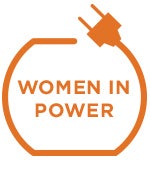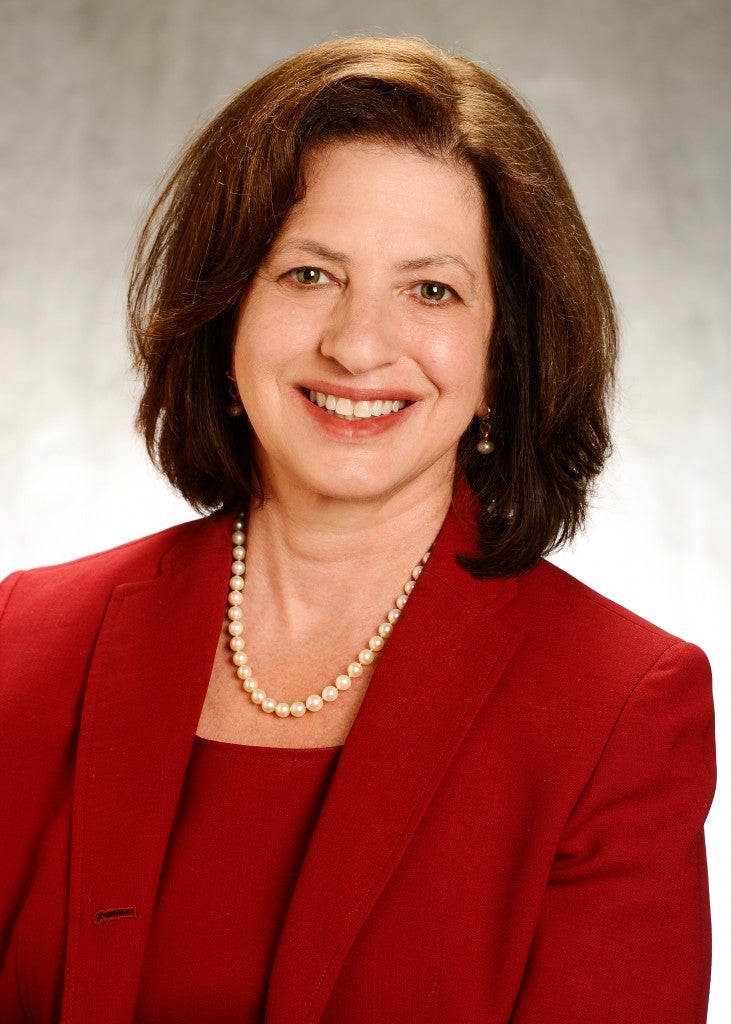Women in Power: Her Plan Could Make the Low-Carbon Energy Economy a Reality
 This is the fifth in a series of posts about leading women in the power, environmental science, advocacy, policy, and business sectors. To see previous installments, please use the ‘Search’ field in the left sidebar to search for ‘Women in Power.’
This is the fifth in a series of posts about leading women in the power, environmental science, advocacy, policy, and business sectors. To see previous installments, please use the ‘Search’ field in the left sidebar to search for ‘Women in Power.’
Working out the specifics of how to restructure incentives for public utilities may not be the trendiest aspect of the clean energy future, but it’s key to making the low-carbon economy reality one day.
Audrey Zibelman, chair of the New York Public Service Commission, says the devil is in the details. Among the many things on her plate today: A bold initiative to overhaul the state’s utility business model, the first such reform in the nation.
Zibelman spoke with me about what it will take to transform America’s electricity industry and change our energy habits.
Why did you take on the challenge of reforming a 130-year-old electricity system?
I had an opportunity to speak with the Cuomo administration about their ideas for the electric industry, particularly in the post-Sandy world, and it became pretty clear to me that their view on how to create a resilient electricity system while addressing climate change – as well as making certain that electricity was affordable – was really aligned with my own concept.
We’re at a point with technology now where clean technology is no longer on the periphery, as something having to do with how we manage the grid, but something that’s actually the core.
So given my background in regulation, utilities, and operations, it just seemed like the commission would be a perfect opportunity to work with an administration that really wanted to move things forward.
What, then, is your recipe for moving things forward in the electricity industry?
Based on my experience, I’ve become convinced that the only way we’re going to make progress in the electric industry is to fundamentally change the incentive mechanisms around utilities. For one, we must dynamically manage demand on the grid.
The more that we can manage demand so that the use of energy becomes more efficient, the more it will help on price, resiliency, climate change. It will create kind of the democratization of energy that everyone’s talking about.
So rather than thinking of demand as the last resource that we manage on the grid, the idea of load response – where you wait until the peak days and then you cut off load – the idea is really around how you use demand more efficiently. And to do that you really need to change the regulatory construct.
Under the new model, instead of distribution utilities being indifferent to energy efficiency or harmed by it, you reward them economically as they make the system more efficient – just as you would any other industry.
How can we scale up clean energy resources, such as solar, wind, microgrids, storage, demand response?
To me it goes back to the fundamentals of energy. The most efficient way we can manage energy is to create a very efficient usage profile. If you take a look at our system today, we operate at best in the low 50’s in terms of the usage rate.
The simple analogy I always draw is that if a manufacturer was operating in a way where it only produced about 50-60 percent of the time, the company would be shut down.
With demand response, you’re managing demand locally and maximizing the value of distributed clean energy resources. So if the wind blows best at night or in the evening, let’s consume energy by using distributed resources, storage – things like that – during the day so that we’re matching wind generation when it’s available. That’s how it creates environmental value.
We believe very strongly that with the right price signals and the right regulatory framework, we can maximize the value of renewables in a much more efficient way. That’s really the focus of the commission I serve on, as well as of the administration.
In the end, what excites you most about your work?
I started out as a lawyer, working for the Attorney General’s office in Minnesota where I was assigned to represent the state in utility matters. I learned in that job that the intersection of public utility regulation – whether the telecoms scene, water, gas, or electric – it all has a profound impact on the quality of life of individuals, families, and on the economic strength of the state.
There are also exciting changes happening in the leadership of utilities. The process itself of moving to a senior role in a utility still tends to favor people who have been in a position for a long time, but I think this is starting to change. What’s heartwarming today is when I go to meetings and you often see that the chairs of commissions or leaders at the regulatory agencies are women, and I think this is having an interesting output on how we’re changing the industry.
Postscript thoughts: Are women driving change?
Zibelman’s final words about how women may be changing the utility business struck a chord with me.
The industry has been dominated by men for most of its lifespan, but is it possible that new and female utility leaders such as Audrey are helping us to actively pursue more diverse – even radical – ideas such as fundamentally overhauling a century-old utility business model?
This is quite possibly a quintessential detail that the clean energy revolution has been missing until now – and I know how Audrey feels about details.
“I think it is worthwhile to roll up your sleeves and really get into the details,” she told me, “and not leave that to other people, because it’s the people who understand the details who tend to excel.”
This post originally appeared on our EDF Voices blog.












